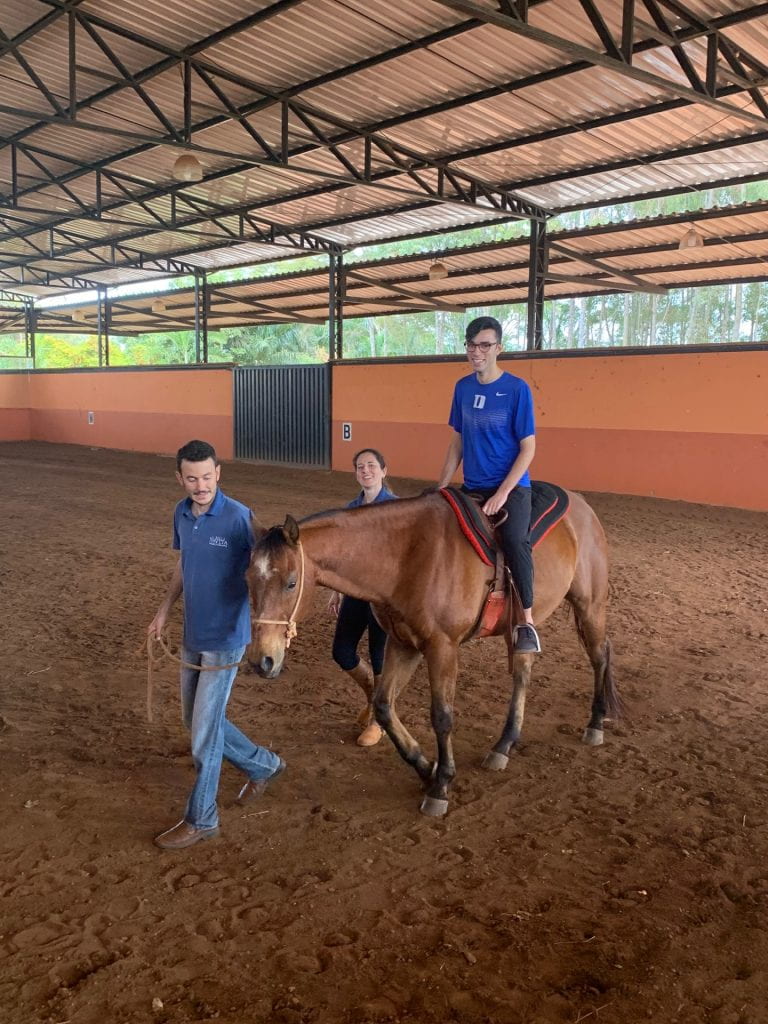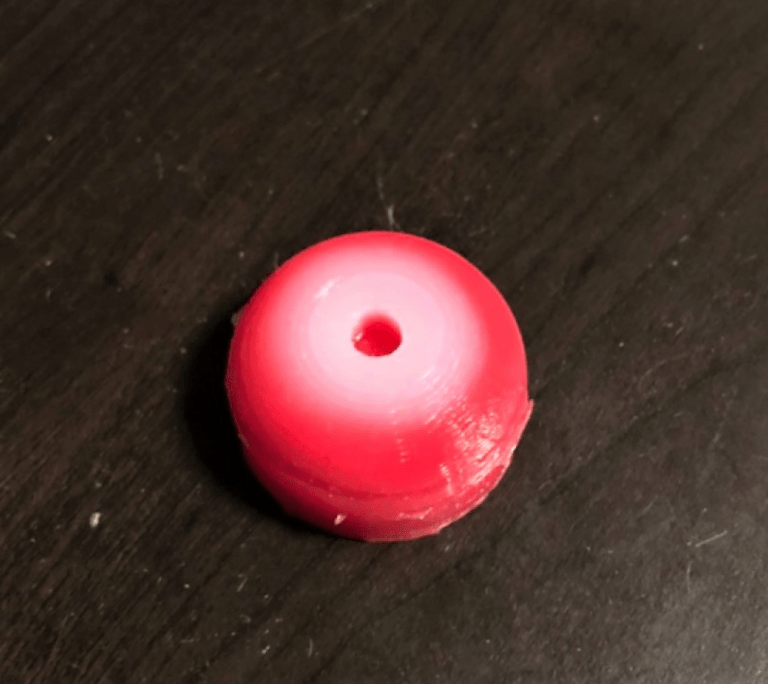Oi agente!
In Barretos this past week Paula and I had a shortened work week as the town celebrated Corpus Christi. Corpus Christi is a Catholic holiday celebrated in Brazil, and though it meant the hospital was only open from Monday to Wednesday this week, it gave us the opportunity to spend a little more time with our projects. It also meant our three days in the hospital were packed with activities. Additionally, the shorter work week meant that we were able to push some of our work forward into what would be the standard 5 day work week so that I could celebrate my birthday on June 22 on Saturday without worrying about what needed to be done.
On Monday a package arrived to Carol with some additional supplies that Paula and I were not able to get in time before we left for Brazil. Inside was an Arduino kit and some materials to make silicone. The Arduino kit is needed for our Wounder Woman project and the silicone is needed for Cervix Squad, our cervical cancer thermocoagulation training model. Knowing that it would be more complicated to determine the proper circuits required to make Wounder Woman function, we chose to begin there.
Our main goals when working with Wounder Woman this week were to establish a proof of concept circuit and then plan out what other materials are needed, if any, to create an Arduino system that can represent the battery level of the product as well as be used for an interface for viewing the pressure level of the device. The proof of concept circuit needed to be able to show that the motor is able to be controlled on a gradient scale rather than a high/low/off power scale as was previously done. I was able to create this in-series circuit which did not use an Arduino interface. We hope with the addition of a stronger battery the gradient scale can become larger. With the proof of concept created this meant that we could focus on determining how to incorporate the Arduino system in with an LCD informational screen. We have found respective procedures for creating Arduino systems which show battery level and also pressure level. Each procedure requires its own Arduino circuit board, but Paula and I are going to attempt to use one circuit board and adjust the provided code so that the number of electronics within the device can be limited. We hope through the limiting of the electronics the battery life of the device can be extended and the weight of the device can be lowered. With these adjustments, Paula and I found that we are missing a couple components, but we have enough currently to continue working on our circuits/code and refining them.

Proof of concept circuit. Included in image one can see the battery, dial for adjusting voltage into pump (in blue/white), and the pump itself.
Working with Cervix Squad, pliability and the color changing properties were the main features which needed to be taken into account when constructing the silicone models. These can mainly be adjusted based on the different ratios in which the silicone components and color changing pigment are mixed. We chose to aim for a semi-hard level of pliability with a deep pink color. The pink color of the model turns white when exposed to heat, thus a deeper initial pink will really showcase the effect the heat probe has. Using the molds we had 3D printed in Houston before leaving we were able to produce three models out of silicone. We hope this week to be able to meet with Dr. Luis Romagnolo and receive feedback.
In addition to our own project development, Paula and I were given the opportunity to attend a live femur intramedullary rodding by Dr. Sylvio Sargentini and we were able to visit the hippotherapy farm owned by the Hospital de Amor.
Before attending the live femur intramedullary rodding, I felt a combination of excitement and nervousness. This was my first live surgery and unlike the United States where there are observation decks, I knew the patient we would see would be within 6 feet of us through the entire procedure. Once in the operating room though, my worries melted away as my engineering mind took hold and I began to analyze and find potential solutions to not only the dilemma presented by Dr. Sylvio but also other potential problems the doctors in the room may have not taken the time to consider. Bellow, I have provided a condensed version of my general surgery observations, potential solutions to Dr. Sylvio’s dilemma, and additional ideas.
General Surgery Observations
- They used very few incisions (total of 3)
- One incision was 3 inches in length and the other two were approximately 2 inches
- The metal rod which was inserted into the femur had to be pushed in very aggressively
- This poses a potential problem due to the frailty of the metastasized bone
Potential Solutions to Dr. Sylvio’s Dilemma
- Add holes into the inserted screws so stability can be maintained while attached to the femur
- Add holes to the drill bits so that the screws can go through while stabilizing the femur
Additional Ideas/Notes
- The lead vests which are required to be worn through the entire procedure are extremely heavy (lead vest are needed due to the high usage of x-rays throughout the procedure for guidance of the metal rod with small incisions)
- Is there a lighter material or a better way to structure the surgery to minimize the time required for doctors to wear the heavy equipment?
- Are there other means to visualize the pathway needed to be taken by the surgeon during the procedure?
- There were approximately 50 x-rays taken throughout the surgery. This means everyone in the surgical room is exposed to high levels of radiation. Could there be another means to visualize without such high levels of radiation exposure?
- Is there a more standardized means to ensure blood does not end up all over the operating room?
- The surgery we were attending had to be pushed back due to excess blood in the operating room from the previous procedure. This meant more time had to be given to the cleaning crew so that our surgery could commence. I also noticed that in our surgery the only means to prevent blood from getting everywhere was to strap blankets from one piece of equipment to another.
Using these notes Paula and I hope to be able to not only provide Dr. Sylvio with feedback on his desired product but also come up with other potential projects to help streamline and simplify the surgical procedure process. Please note photos from the surgery have been excluded to protect the identity of the patient and because of the blood in the images.
In addition to our time in the operating room, Paula and I took a trip outside of the hospital to their hippotherapy farm. Hippotherapy is the use of horseback riding to provide neuromuscular stimulation to patients who have completed their treatment at the Hospital de Amor. We were given the chance to ride the therapy horses and were also walked through a standard therapy session. Most often the therapy sessions last 30 minutes and involve the patients placing their body in a number of different positions while riding the horse to stimulate different muscles and nerves. This was my first time riding a horse, but through doing so I could see how hippotherapy can not only soothe a patient while giving them a workout. The process of hippotherapy does not use a lot of equipment, only a saddle, instructor and a horse, so we were not able to find many sources for technological improvement. Mainly when considering hippotherapy we thought of means to increase access. Previous senior design teams at Rice have developed electronic/mechanical horses which mimic the movements of hippotherapy. We will continue to think of potential project sources within this department moving forward.

I am pictured here riding the horse Purple. The two instructors are walking me through a standard therapy session.
As a whole, we were able to obtain a variety of new project ideas while also being able to gain progress in projects we brought from Rice. Therefore to celebrate the end of the week and my birthday Paula and I went to see Men in Black: International at the movie theaters. There were no English showings so we had the chance to practice our Portuguese. I will say I did not understand everything in the movie, but I enjoyed the chance to stretch my Portuguese speaking ability.
Next week Paula and I will be visiting the Nuclear Medicine and Prosthetics departments. We hope to be able to find potential projects in these areas. I am particularly excited to learn more about the process of creating prosthetics. From what I understand thus far the process can be very time consuming and I would like to see if there is a way for me to streamline the process while not diminishing the accuracy.
For my sunrise/sunset photo to sign off this week I have included a video of Paula and I doing sunrise yoga on the rooftop deck of our apartment building on the morning of Corpus Christi.
Until next week! Até logo!


